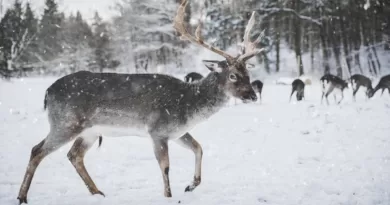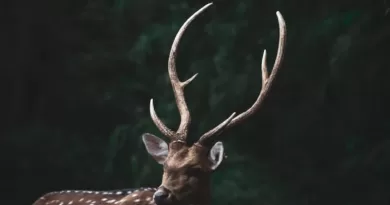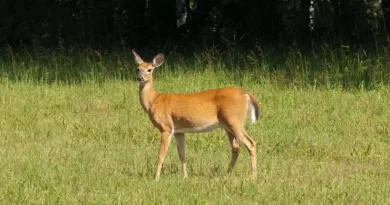Do Deer Eat Bird Seed
Understanding the Diet of Deer: Exploring the Feeding Habits of Deer
The diet of deer is diverse and varied, depending on factors such as the species of deer, their geographical location, and the time of year. Generally, deer are herbivorous animals, feeding mainly on leaves, grasses, and shoots. They are known to be adaptable eaters, consuming a wide range of plants, including shrubs, tree bark, fruits, nuts, and even mushrooms.
During the spring and summer months, deer have access to an abundance of fresh vegetation, and they primarily feed on tender grasses and young leaves. In the fall and winter, when food sources become scarce, deer rely heavily on twigs, buds, and the bark of trees. They also have the ability to dig through the snow to uncover hidden food sources, such as mosses and lichens, which provide vital nutrition during the harsh winter months.
An Unexpected Culprit: Uncovering the Surprising Relationship Between Deer and Bird Seed
Bird seed is often considered a delightful treat for birds, attracting a wide variety of species to backyard feeders. However, an unexpected culprit has emerged – deer. These majestic creatures have taken a liking to bird seed, snacking on it whenever they come across a source. While it may seem unusual for such large animals to have an affinity for such tiny treats, understanding the reasons behind this behavior can shed light on their surprising relationship with bird seed.
One reason deer are attracted to bird seed is the nutritional value it provides. Bird seed typically contains a mix of seeds, grains, and nuts that are rich in various nutrients. Deer, being herbivores, require a diverse diet to meet their nutritional needs, and bird seed offers a convenient and easily accessible source of food. The high energy content of bird seeds, such as sunflower seeds, can help deer fuel themselves during times when other food sources may be scarce. Additionally, some bird seed blends may contain ingredients like corn and soybeans, which are staples in deer diets, further increasing their appeal.
The Nutritional Value of Bird Seed: What Attracts Deer to These Tiny Treats?
Bird seed may seem like a curious choice of food for deer, considering their natural diet primarily consists of leaves, grass, and twigs. However, these majestic creatures have surprisingly adaptable palates and are often drawn to bird seed for its nutritional value. Bird seed typically contains a variety of seeds, such as sunflower, corn, millet, and oats, which are high in carbohydrates and fats. These nutrients provide deer with the energy they need, particularly during the harsh winter months when other food sources may be scarce. Additionally, the protein content in some bird seeds, such as sunflower seeds, can help deer build and maintain muscle mass.
Another factor that attracts deer to bird seed is its availability. Many bird feeders are placed in easily accessible locations, such as backyard gardens or open fields, where deer commonly roam. The smaller size of bird seeds also makes them convenient for deer to consume, as they can easily pick them up with their tongues or teeth. Furthermore, the aroma and taste of bird seed may be enticing to deer, who have a keen sense of smell and are often drawn to fragrant foods. Overall, the nutritional value and accessibility of bird seed make it an appealing and convenient option for deer, despite it being an unexpected addition to their diet.
Identifying the Signs: How to Determine if Deer Are Consuming Your Bird Seed
Deer can be quite sneaky when it comes to raiding bird feeders, but there are some telltale signs that can help you determine whether these graceful creatures are feasting on your bird seed. One of the easiest ways to identify deer activity is by observing the physical damage to your bird feeder. Deer have a strong bite, capable of leaving noticeable marks on the feeder. Look for signs of broken or chewed parts, as well as any visible saliva left behind. Additionally, a large amount of bird seed scattered around the feeder can indicate that deer have been feeding on it, as they tend to be less tidy eaters than birds.
Another clue to look out for is the size of the tracks near your bird feeder. Deer tracks are distinct due to their cloven hooves, which leave a clear imprint on soft ground or muddy surfaces. If you notice tracks that are larger than those made by birds, it is likely that deer have visited your bird feeder. Keep in mind that deer are frequent visitors during certain seasons, so observing the frequency and freshness of the tracks can give you a better idea of their presence. By being vigilant and observant of these signs, you can gain insight into whether or not deer are enjoying the treats intended for your feathered friends.
Deer-Proofing Your Bird Feeder: Effective Strategies to Keep Deer at Bay
When it comes to deer-proofing your bird feeder, there are several effective strategies that can help keep these graceful creatures at bay. One way to deter deer from accessing your bird feeder is by installing a fence around it. This can be a physical barrier, such as a mesh or wooden fence, that prevents deer from reaching the feeder. Another option is to elevate the bird feeder to a height that deer cannot reach. By placing it on a tall pole or hanging it from a tree branch that is out of their reach, you can ensure that the birds have easy access to their food while keeping the deer at a safe distance.
In addition to physical barriers, there are also repellents that can be used to deter deer from approaching your bird feeder. These repellents can come in the form of sprays or powders that emit a scent that is unpleasant to the deer. The smell can be a combination of natural substances, such as garlic or predator urine, which can help repel the deer without causing harm to them or the birds. It is important to regularly reapply these repellents to maintain their effectiveness. By implementing these strategies, you can create a bird feeding environment that is exclusive to our feathered friends, effectively keeping the deer at bay.
Alternative Food Sources for Deer: Providing Natural Options to Deter Their Interest in Bird Seed
Deer are known to have a diverse diet, and providing alternative food sources can help deter their interest in bird seed. One option is to offer them various types of fruits and vegetables. Carrots, apples, and pears are all favorites of deer and can be easily placed near their regular feeding areas. Another natural option is to plant specific types of trees and shrubs that deer prefer. Fruit-bearing trees such as crabapples and cherry trees can act as a decoy, attracting deer away from bird feeders. Additionally, deer are attracted to nuts, so consider planting oak or hickory trees to provide an alternative food source. These natural options not only deter deer from consuming bird seed but also provide them with a more balanced diet.
Another effective way to divert deer’s attention from bird seed is by creating a separate feeding area specifically for them. Planting a wildlife food plot with various types of grasses, clovers, and legumes can provide deer with a more appealing and nutritious alternative. This not only benefits the deer but also helps reduce the competition for food among different wildlife species. By providing natural options that mimic their natural habitat, we can encourage deer to graze elsewhere and reduce their dependence on bird seed.
The Impact on Birds: Examining the Consequences of Deer Consuming Bird Seed
Deer consuming bird seed can have significant consequences for birds. When deer are attracted to bird feeders, they often create disturbances that can scare away smaller birds. The presence of deer can cause birds to feel unsafe and abandon feeding areas, negatively impacting their ability to find food and maintain energy levels. This disruption in feeding patterns can have long-term effects on bird populations, affecting their overall health and survival. Moreover, as deer consume larger quantities of bird seed, they can deplete the available food source, leaving less for the intended avian visitors. This competition for resources can lead to increased aggression among birds, further compromising their well-being. Hence, the presence of deer in bird feeding areas can have ripple effects on the entire avian ecosystem.
• Deer create disturbances that scare away smaller birds
• Birds feel unsafe and abandon feeding areas
• Disruption in feeding patterns can have long-term effects on bird populations
• Birds struggle to find food and maintain energy levels
• Deer consume larger quantities of bird seed, depleting the available food source for birds
• Competition for resources leads to increased aggression among birds
Balancing Wildlife Conservation: Finding a Middle Ground for Both Birds and Deer
Wildlife conservation is a delicate balance, especially when it comes to the interaction between birds and deer. As nature enthusiasts, it is important for us to find a middle ground that allows both species to coexist harmoniously. By understanding the needs of each animal and implementing effective strategies, we can create a sustainable environment that supports the diverse wildlife in our surroundings.
One way to achieve this balance is by providing alternative food sources for deer. While bird seed may be an attractive treat for them, offering natural options such as native grasses, shrubs, and trees can help deter their interest in the bird seed. By creating a diverse and abundant food supply, we not only discourage deer from consuming the seed meant for birds but also provide them with the nutrition they need to thrive. Additionally, planting crops that are less appealing to deer, such as flowers with strong scents or plants with thorny leaves, can further minimize their dependence on bird seed.
Gardening Tips to Deter Deer: Creating a Landscape That Discourages Deer from Foraging on Bird Seed
One effective way to deter deer from foraging on bird seed is to create a landscape that is uninviting for these animals. By strategically designing your garden, you can minimize the temptation for deer to enter your property and consume the bird seed intended for birds. Start by incorporating plants that are unpalatable to deer, such as lavender, marigolds, and daffodils. These plants have strong scents or bitter tastes that deer tend to avoid. Additionally, adding thorny or prickly plants like roses or holly can create physical barriers that deter deer from entering your garden.
Another tactic is to create a visual deterrent by installing motion-activated sprinklers or garden lights. Deer are often startled by sudden movements or bright lights, causing them to retreat from the area. Be sure to position these deterrents strategically to cover the areas where your bird feeders are located. Furthermore, employing fencing or netting around your garden can provide an extra layer of protection against deer. Ensure that the fencing is at least 8 feet tall, as deer are skilled jumpers. By implementing these gardening tips, you can create a landscape that discourages deer from foraging on bird seed and reduces the likelihood of their presence in your garden.
Observing Nature: Appreciating the Interactions Between Different Wildlife Species
When we take the time to observe nature and the interactions between different wildlife species, we can gain a deeper appreciation for the intricacies of the natural world. It is fascinating to witness how various species rely on each other for survival, creating a delicate balance within ecosystems. From watching birds feed on insects, to witnessing squirrels scurry up trees in search of acorns, these interactions remind us of the interconnectedness of all living things.
Observing nature also provides us with insight into the behaviors and adaptations of different wildlife species. It is remarkable to see how animals have developed unique strategies for finding food, avoiding predators, and protecting their young. Whether it’s observing a deer graze in a field or witnessing a hawk swoop down to catch its prey, these interactions offer a glimpse into the survival mechanisms that have allowed these species to thrive for centuries. By taking the time to appreciate these interactions, we can develop a deeper understanding and respect for the world in which we live.
What is the main focus of this article?
The main focus of this article is to explore the interactions between different wildlife species, specifically deer and birds, and how their relationship can impact the feeding habits of both.
Why is it important to understand the diet of deer?
Understanding the diet of deer is important because it helps us better understand their feeding habits and preferences, which can then be used to develop effective strategies for deterring them from consuming bird seed.
What is the surprising relationship between deer and bird seed?
The surprising relationship between deer and bird seed is that deer are attracted to the nutritional value of bird seed and often consume it, which can have negative consequences for both the birds and the deer.
What attracts deer to bird seed?
Deer are attracted to bird seed due to its high nutritional value. The seeds and grains in bird seed provide essential nutrients that are beneficial for deer’s health and growth.
How can you determine if deer are consuming your bird seed?
There are several signs that can indicate if deer are consuming your bird seed, such as large hoof prints near the feeder, scattered seed on the ground, and damage to the bird feeder itself.
What are effective strategies to keep deer away from bird feeders?
Some effective strategies to keep deer away from bird feeders include using deer-proof feeders, placing the feeder in a location inaccessible to deer, and using natural deterrents like plantings or scents that repel deer.
Are there alternative food sources for deer?
Yes, there are alternative food sources for deer that can be provided to deter their interest in bird seed. Planting deer-resistant plants or providing natural food plots can help redirect their feeding habits.
How does deer consuming bird seed impact birds?
When deer consume bird seed, it can lead to a decrease in the food available for birds, potentially affecting their health and survival. It can also disrupt the natural balance of the ecosystem.
How can you create a landscape that discourages deer from foraging on bird seed?
Creating a landscape that discourages deer from foraging on bird seed can be achieved through various gardening tips, such as planting deer-resistant plants, using fencing or barriers, and removing attractants like fallen fruits or vegetables.
Why is it important to appreciate the interactions between different wildlife species?
It is important to appreciate the interactions between different wildlife species because it helps us understand the interconnectedness of ecosystems and promotes a balanced coexistence between humans and wildlife.




